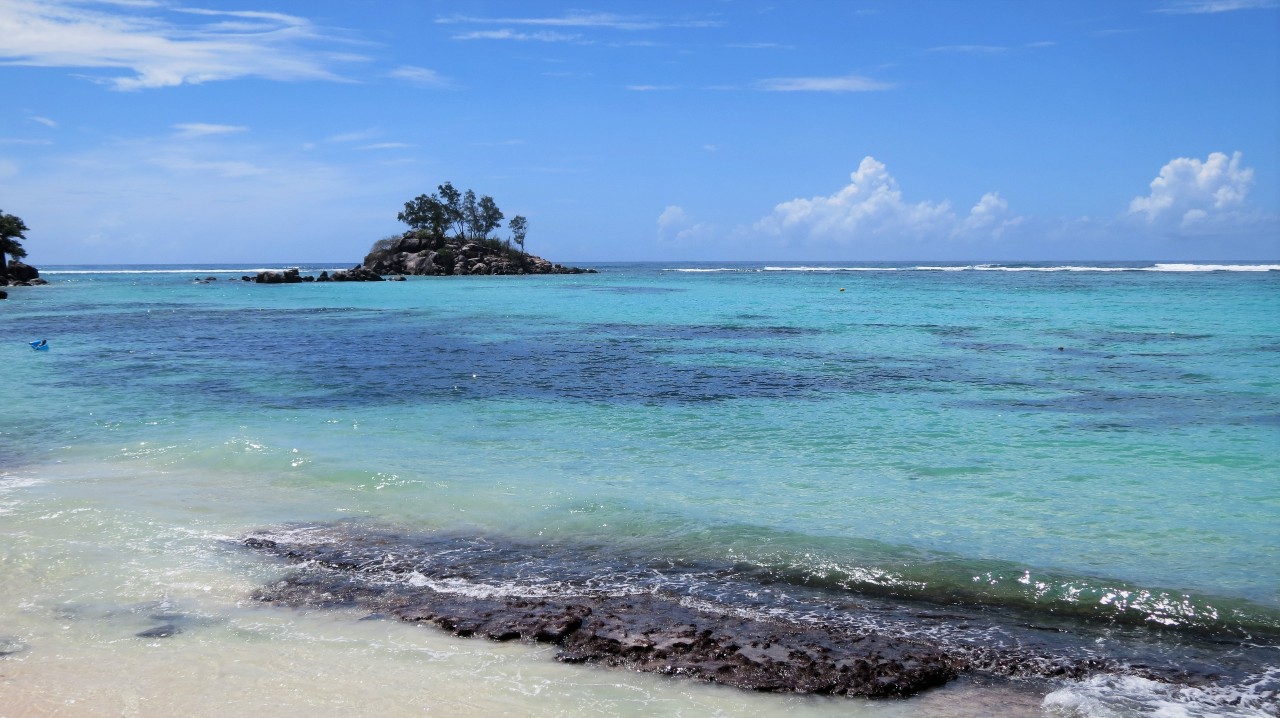Visiting the Seychelles islands must surely be on everybody’s bucket list, especially if it’s an island hopping experience. An archipelago of incredible beauty, a fascinating history, vibrant Seychellois culture, intriguing legends, and home to some of the rarest species of fauna and flora on earth – as well as two UNESCO World Heritage Sites. The Garden of Eden? Quite possibly…
Seychelles has always had far sighted conservation policies, with almost half of its landmass set aside as national parks – Morne Seychellois National Park on Mahé, the Praslin National Park and Veuve Reserve on La Digue – and six marine national parks along its shores. Not only do these areas offer protection to an incredible biodiversity of fauna and flora, but they are also enjoyed by thousands of visitors, both local and international.
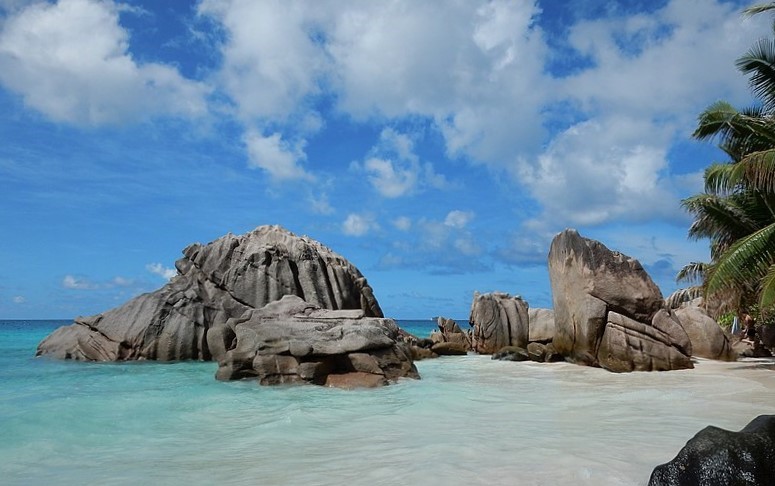
Any visit to the Seychelles should be about exploring its fabulous islands, experiencing real Seychellois hospitality, and learning about the culture, history, and its rare and unique flora and fauna. And don’t forget the fabulous Creole cuisine, which is mouth-wateringly delicious.
Of the 115 islands, we visited only four – as spectacular and diverse as these were, there is a definite need to come back time and again and explore a few more!
Most of our time was spent on Mahé, the largest island. It is the cultural and economic hub of the Seychelles islands and home to the capital Victoria and the international airport. Most of the island’s interior consists of forest clad granite peaks interspersed with tea plantations and tea houses, traditional homes, and local communities – even a natural spring flows out of the mountains where locals catch this life-giving elixir in large plastic containers.
The Morne Seychellois National Park, encompassing around 20% of the land area of Mahé, includes a variety of habitats from coastal mangrove forests to the country’s highest peak, the Morne Seychellois at 905m. These peaks are a hiker’s paradise, with walking trails leading through thick indigenous forest up to rocky outcrops with spectacular views.
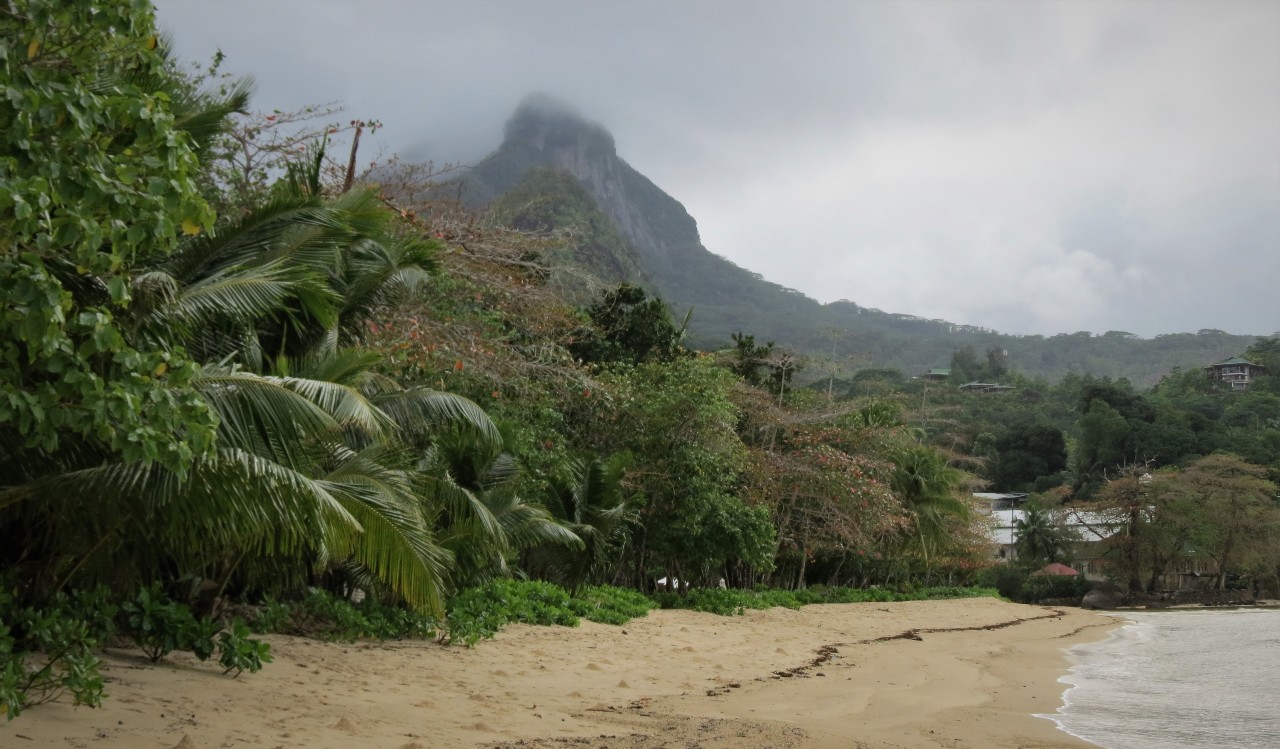
An easily accessible spot along the road from Victoria to Port Glaud, is Mission Lodge. This was the site of Venn’s Town, a missionary established by the London Missionary Society in 1875 for the children of liberated African slaves where they were looked after and educated – the mission closed in 1895. Today just a few crumbling walls remain, the highlight though is the viewing lodge inaugurated by H.R.M. Queen Elizabeth II in 1972. It is perched on top of the hill overlooking the west coast of the island, with stunning views and the option of buying tea and cake from an enterprising local.
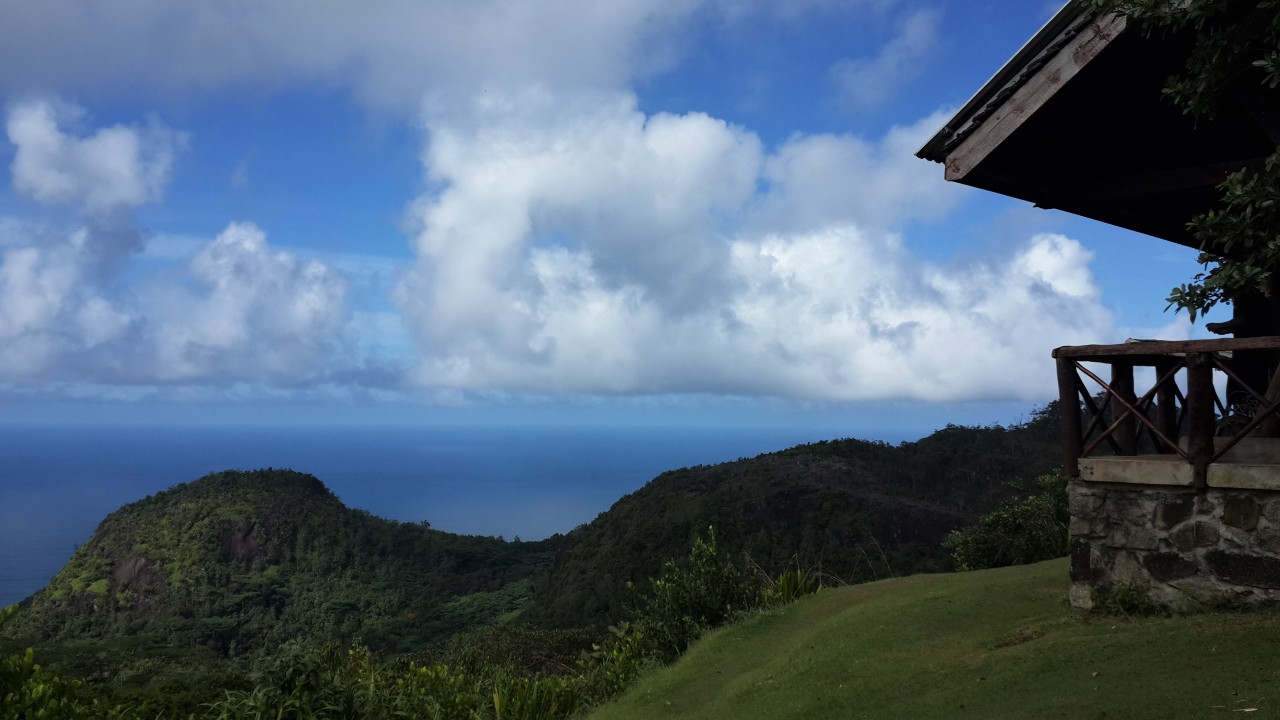
Further down the road you pass tea plantations and a working tea factory offering free tours showing the tea-making process – pop into the Tea Tavern for a cuppa, and the gift shop for some locally made SeyTé.
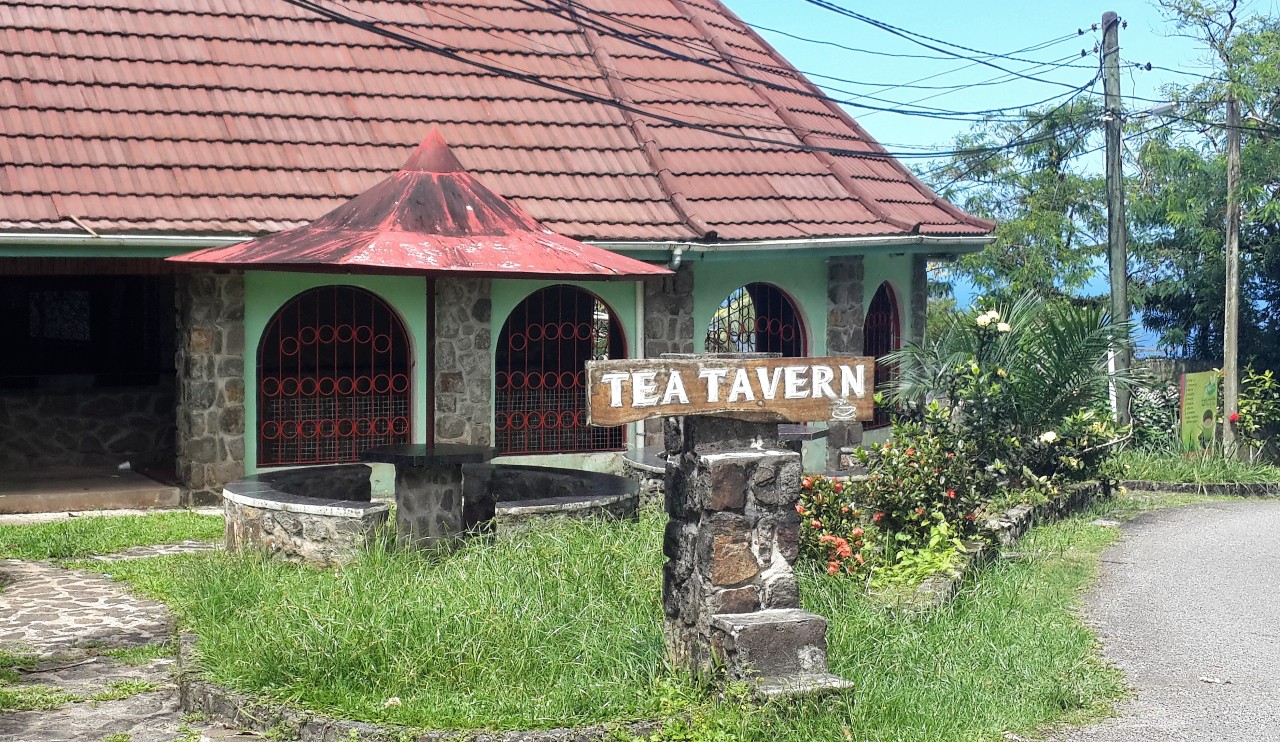
For a beverage of another kind, another must do is the Takamaka Rum Distillery, a National Heritage Site. The Trois Des Frères Distillery, makers of the famous Takamaka Bay rum, is located in the historical gardens of the La Plaine St André in the Au Cap district on the eastern coast of Mahe.
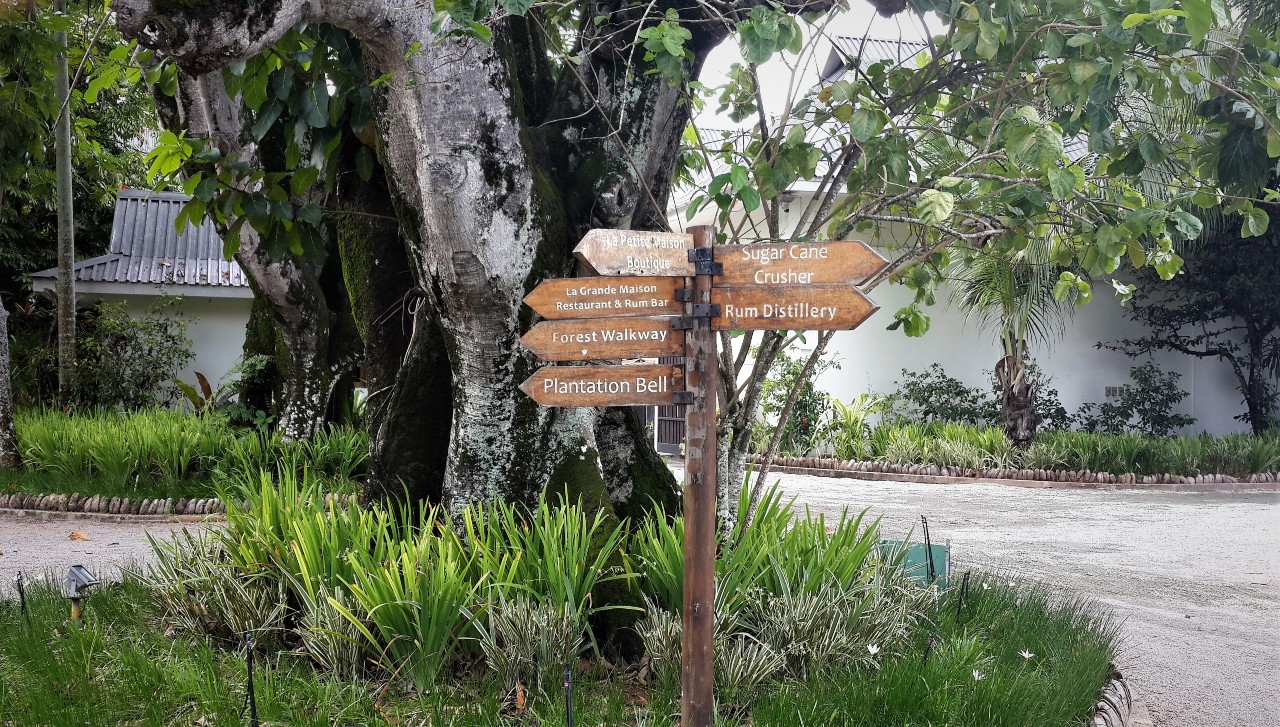
The restored plantation house, La Grande Maison which dates back to 1792, offers a wonderful respite from the tropical island heat as well as rum tasting and an exotic Creole menu. The sugarcane used to make Takamaka Bay rum is supplied by a cooperative representing close on 40 farmers and the water is sourced from mountain springs on the island, making this very much a ‘home grown’ product. It’s no wonder the rum is wonderfully smooth with a distinctively Seychellois taste.
Seychelles’ second largest island, Praslin, is an easy one-hour ferry ride on the Cat Cocos from the Inter Island Quay in Victoria. Located in the middle of the island is the fabulous Vallée de Mai, one of two UNESCO World Heritage Sites on Seychelles, is home to the spectacular coco-de-mer palm and elusive black parrot. We stroll beneath the towering palm trees – there are six species found only in Seychelles – marvelling at this veritable ‘Garden of Eden’. Our guide points out a Seychelles bronze gecko, we see a tenrek (a small mammal resembling a hedgehog), a green tree frog as well as a Praslin snail.

Surrounded by the coco-de-mer you cannot help but notice the long, phalic like, flowers on some of the palms… Our guide explains that the coco-de-mer comes in both male and female, the male producing this 1.5-metre-long flower – the females less significant flowers are shadowed by the enigmatic somewhat human shaped double nut she produces.
Science has yet to prove how fertilisation occurs, but legend has it that on stormy nights the male palm uproots itself and ‘walks’ to the female where they make passionate love and should anyone see this, they will go blind or die – another version, which I prefer, is that should you come upon this passionate embrace you will instantly be turned into a black parrot. Clearly few have glimpsed this passionate affair as the black parrot can sometimes be heard in the early morning but is very seldom seen.
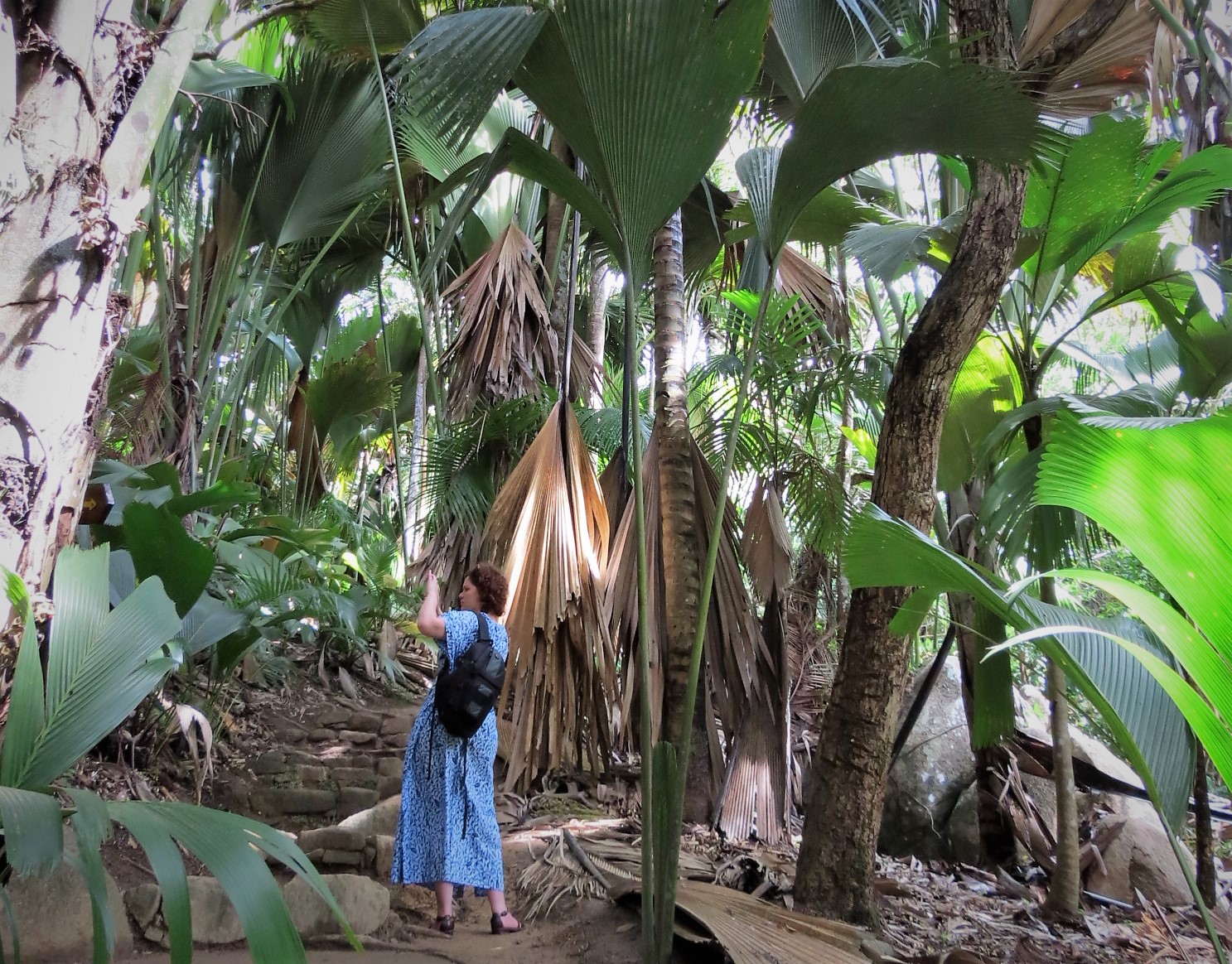
In addition to this spectacular flora, Praslin is blessed with incredibly beautiful beaches (as is all of Seychelles), such as Anse Georgette and Anse Lazio, said to be one of the most photographed beaches in the world – next would probably be Anse Source d’Argent on La Digue.

Ah, La Digue… An island where time seems to have stood still, a place where the pace of life is as slow as the means of transport – get around the narrow island streets, dirt roads and pathways by either bicycle, oxcart or on foot. This intimate island boasts a traditional way of life, stunning beaches with white sands, magnificent granite boulders and warm turquoise waters as well as wonderfully lush vegetation. Look out for delicate orchids, vanilla plantations, giant takamaka trees (on the beaches) and the endemic and critically endangered Seychelles’ black flycatcher.

A must-do is experience when in the Seychelles is to do a spot of island hopping, so hop aboard we did – onto a luxury catamaran. Leaving the picturesque harbour of Praslin behind, we cruise past granite outcrops and palm lined beaches dropping anchor off both Coco and Felicite islands to experience the wonders of the coral reef that lies beneath. Snorkeling gear in hand we slip into the deliciously warm turquoise water to be greeted by a kaleidoscope of colour – blue and yellow, shimmering silver, midnight blue… angel fish, butterfly fish, parrot fish to name but a few, the green sea turtle unfortunately eludes us.
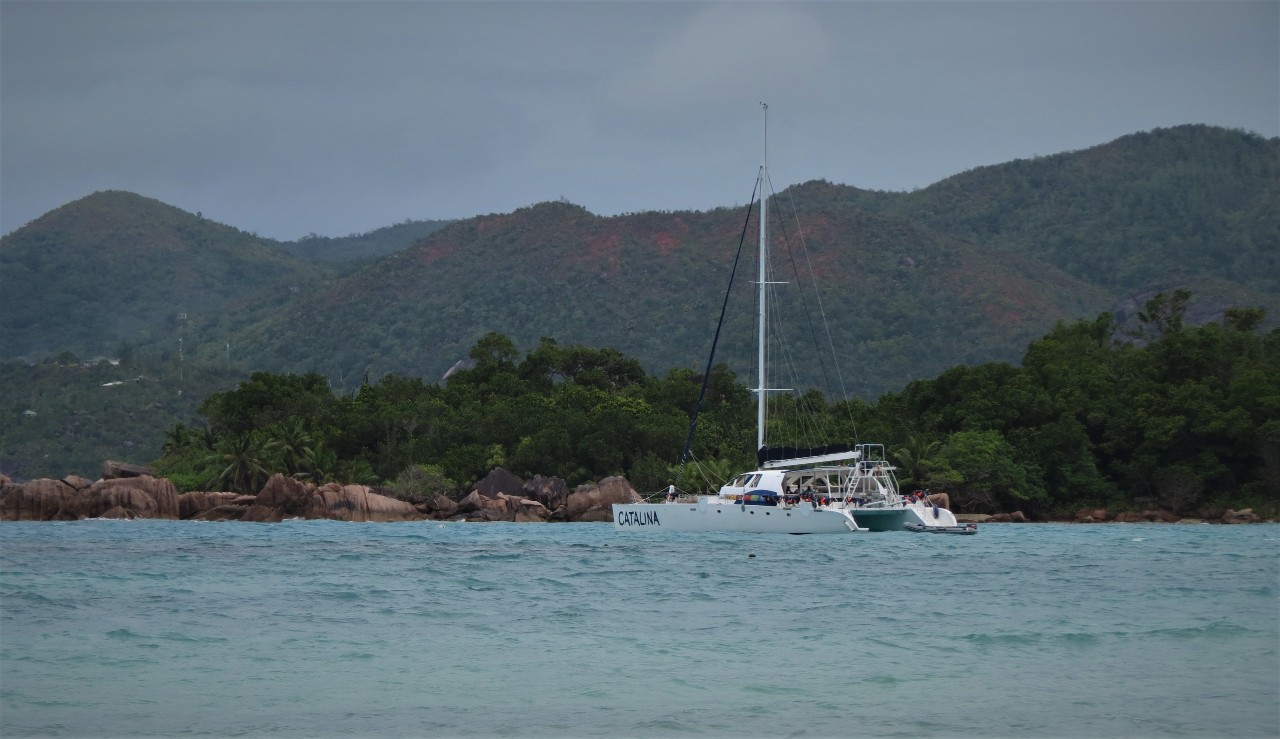
Back on board a delicious barbeque lunch is served. Enjoying the warmth of the sun we continue on to Curieuse Island National Marine Park, home to a giant tortoise breeding project. This is also the only other place the coco-de-mer grows naturally. We spend some time appreciating seeing these gentle giants in their natural environment, unlike many other places where they are kept enclosed as a tourist attraction. A delight to both adults and children alike, we see even the surliest of visitor become like a kid posing for the obligatory photo.
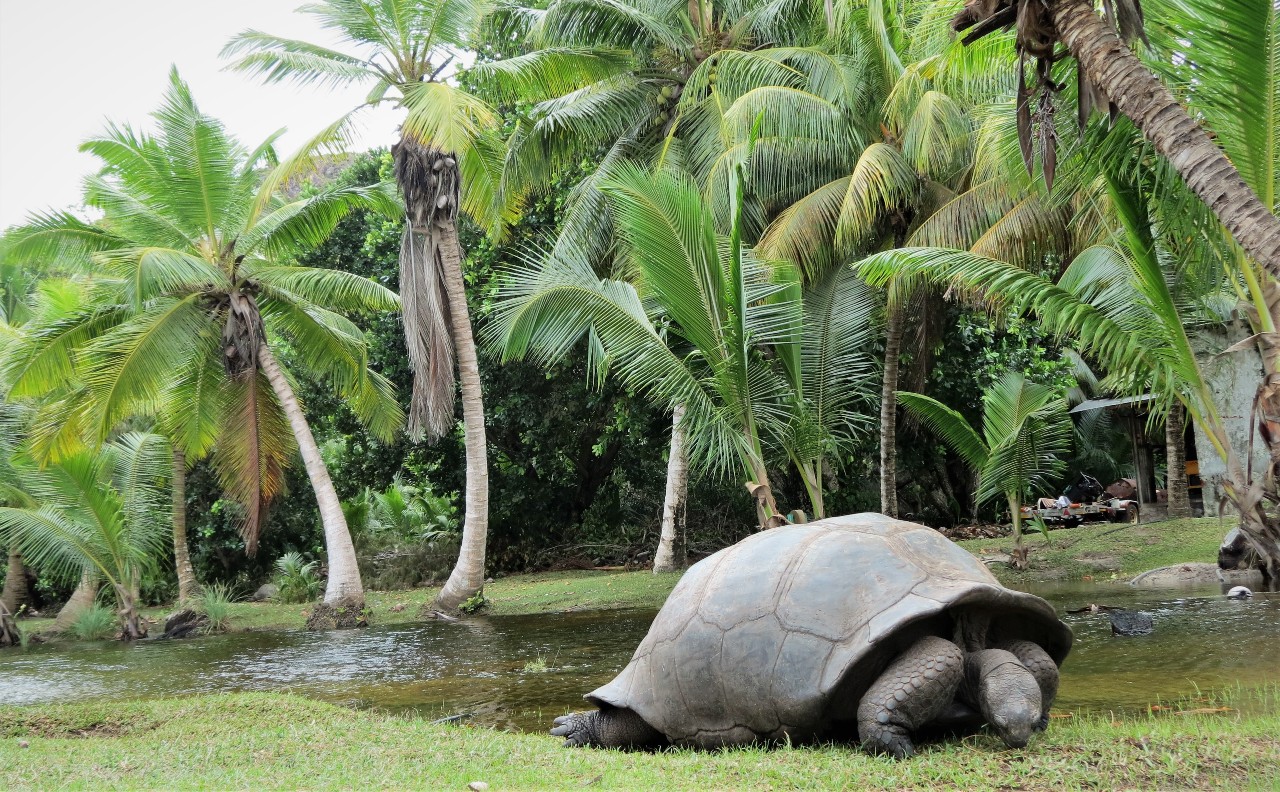
Next is a walk to Anse St Joseph and the doctor’s residence, a restored colonial villa that is now a museum on the history and ecology of the island – Curieuse was a leper colony from 1833 to 1965. The walk takes us through dense mangrove forests and intertidal wetlands, past giant granite cliffs, forests, and swamps as well as the ancient ruins of the leper colony, whose walls are being smothered by thick vegetation.
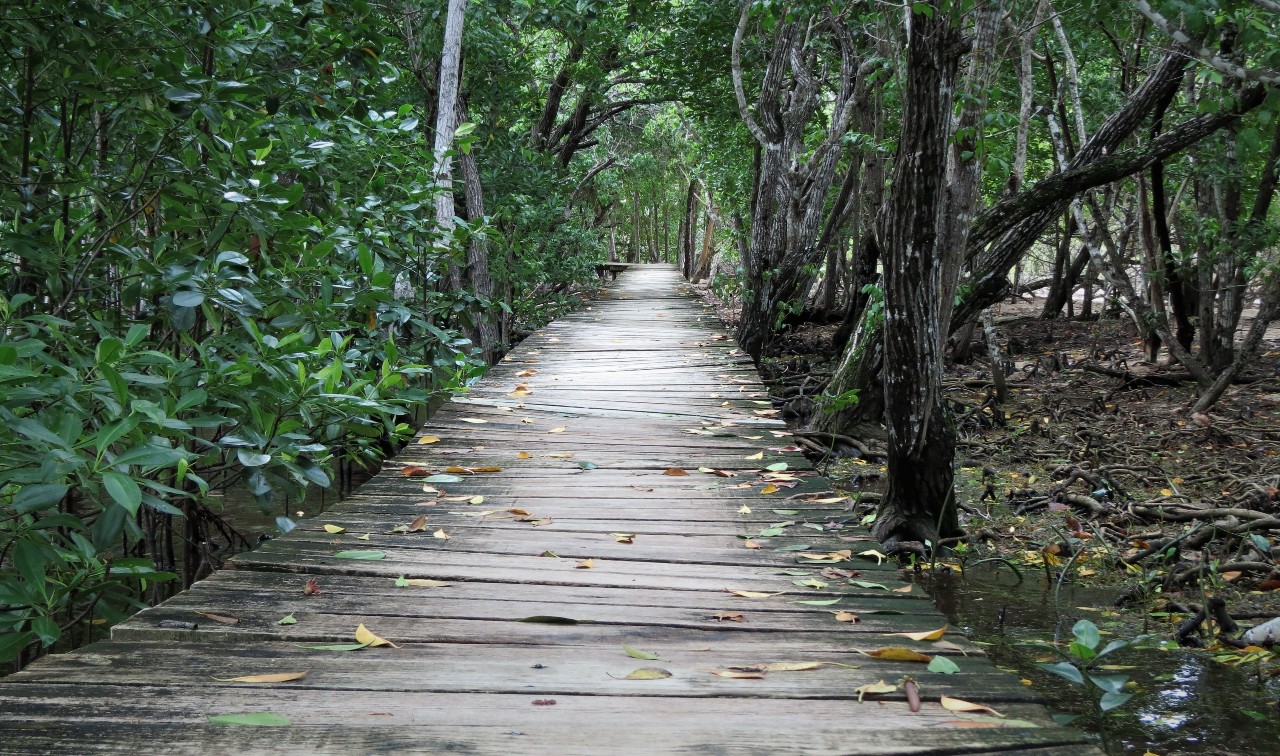
It is not just the unique flora and fauna, exquisite beaches and lukewarm water that appeals. What makes Seychelles such a wonderful destination is her people. The locals, known as Seychellois, are a colourful blend of different cultures, religions, and race. It is this melting pot of ancestry and heritage that makes the Seychelles Creole culture so unique and such a delight to visitors.
Think beautiful French colonial architecture, romantic sounding names like Anse Lazio (beaches just sound better in French!), glorious gardens of exotic spices, the vibey rhythms of local music and dance, and of course the wonderfully delicious Creole food – which we had ample opportunity to become well acquainted with.
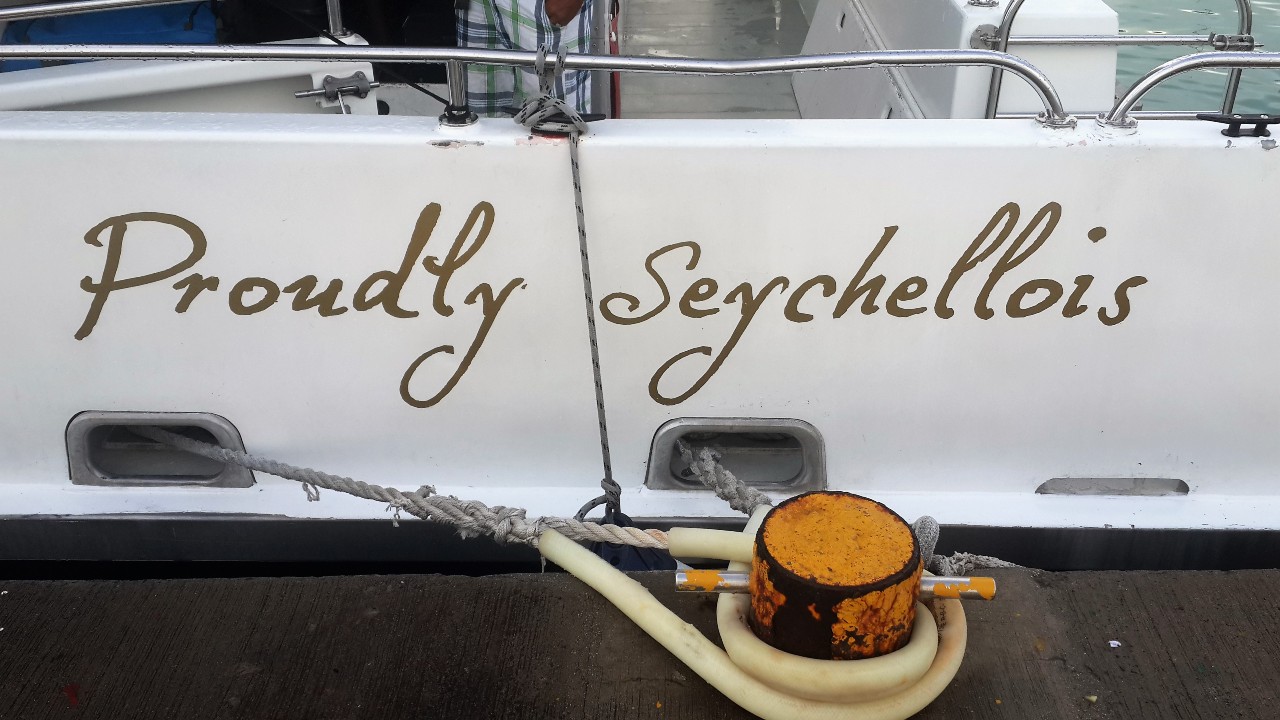
We visited the lovely Jardin du Roi, located on a hillside overlooking Anse Royale on the southeast coast of Mahé. It is a renovated plantation that takes one back to the days when the islands were a hub for the spice trade. A tour of the garden takes one past a variety of spices, including nutmeg, vanilla, and cinnamon as well as other rare and endemic plants. There is a small museum that relates the history of the spice trade, giant tortoises (in captivity) and a wonderful restaurant serving delicious Creole cuisine. The menu included local specialty, breadfruit, baked and served with another island staple, coconut milk. I was very happy to feast on the breadfruit as legend has it that if you eat breadfruit in the Seychelles, you’re guaranteed to come back to the islands.
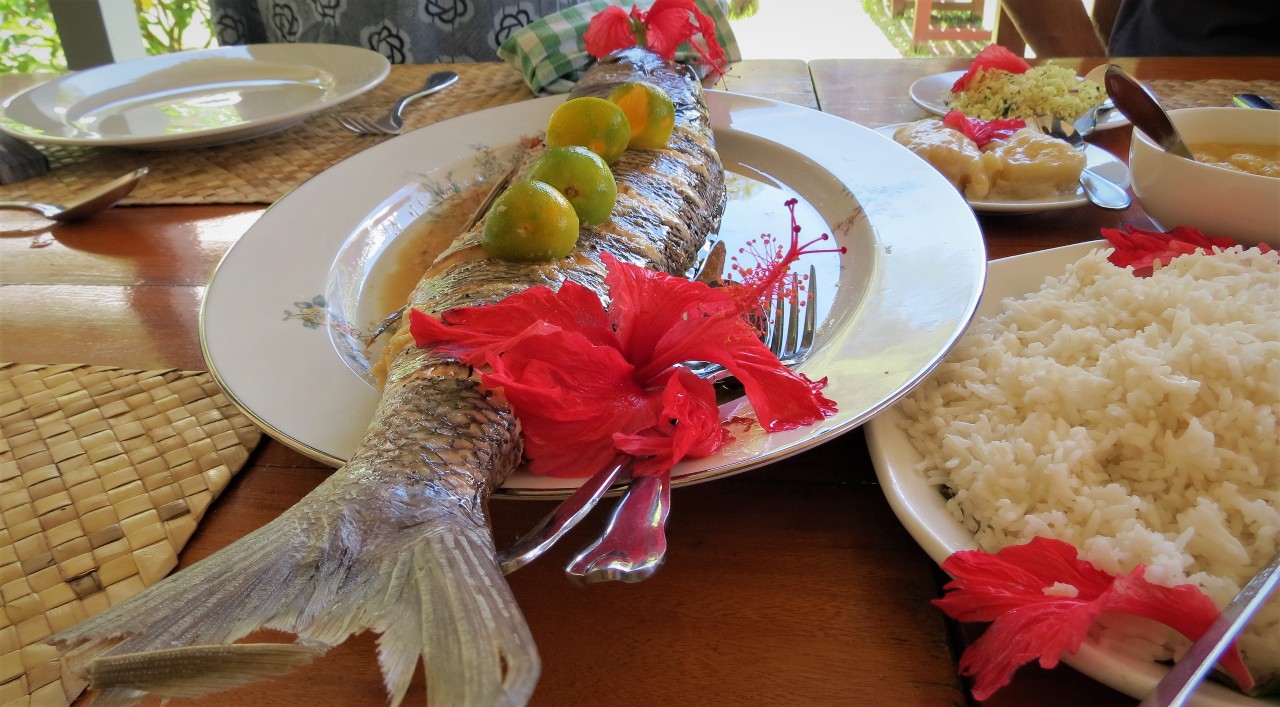
The Marie Antoinette, named after Queen Marie-Antoinette of France, is one of the oldest and most famous restaurants Seychelles for Creole Seychellois food. Located along St Louis Road towards Beau Vallon, this majestic old building – dating back to the 1800s – boasts colonial style architecture, high roof, a polished wooded staircase, and floors as well as a very cool wall covered in business cards (mine included!). The mouth-watering menu is extensive, so be warned – come hungry.
My absolute favourite for Croele cuisine was the Boat House Restaurant, located on the north-western coast of Mahé overlooking the popular Beau Vallon beach. Started almost 30 years ago by the Mancienne family, the Boat House is famous for its authentic Seychellois cuisine. A speciality their sumptuous Creole buffet served in the evenings consisting of over 20 local specialities, from delicious, barbequed fish (caught fresh daily) to papaya satini, green mango salad, and assortment of curries as well as breadfruit chips.
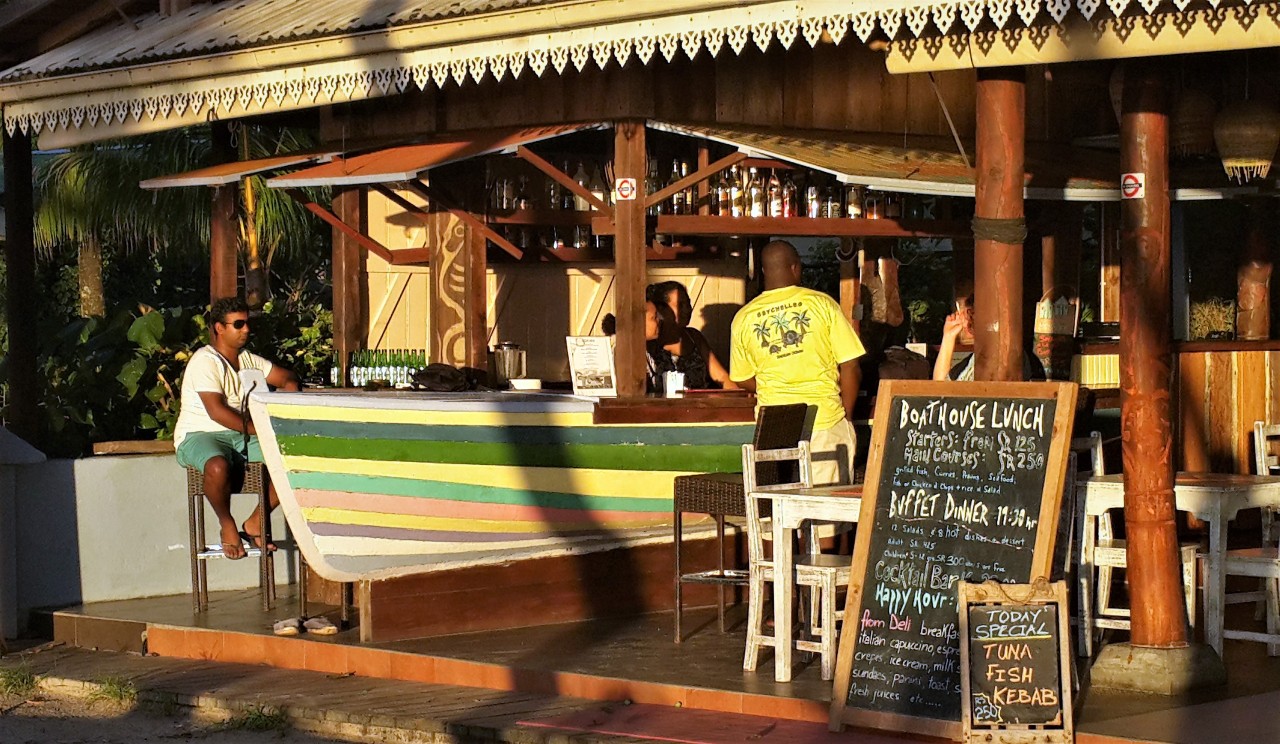
Bathed in late afternoon sun, we sit and enjoy a glass (or two) of local Sey Brew beer, contemplating the highlights of our time in Seychelles – the people we met (and friends we made), the beaches, the palm trees, the history, the food… the wonderfully warm and calm sea, the shades of blue, and green. Our days too few, left us longing for more.
Words Tessa Buhrmann / Images – Tessa Buhrmann, Wikimedia

